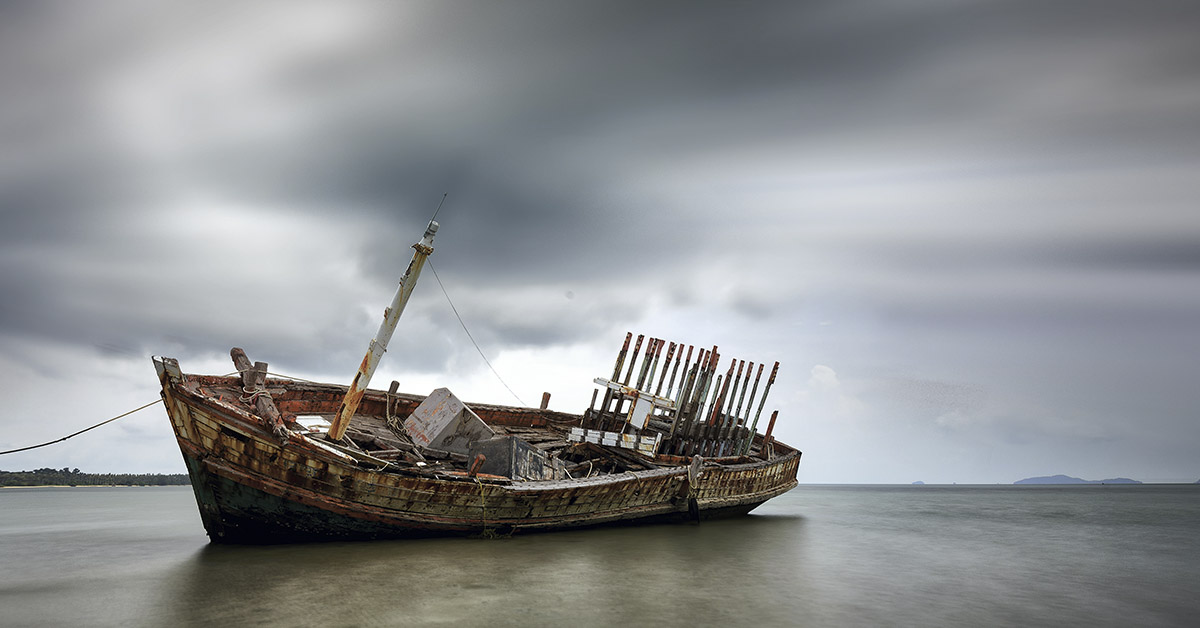In a remarkable find, a 1,200-year-old shipwreck was found off the coast of Israel, giving new insights into the period following the Islamic conquest of the Holy Land.1 The September 2022 discovery sheds light on the persistence of trade and commerce in the Mediterranean region, defying the belief that international trade had come to a halt during this time.2 This finding challenges our understanding of the relationship between different cultures and religious groups in the region, showing the continued interaction and exchange of goods between the West and the Holy Land.
Ancient Wealth
The shipwreck, identified as a trade vessel, is believed to date back to the seventh or eighth century AD. It was a period of significant change, with the Islamic Republic growing its influence across the eastern Mediterranean while the Christian Byzantine Empire struggled to maintain its control. Despite the religious tensions, the wreckage indicates that trade continued to thrive in the Mediterranean, specifically in areas such as Cyprus, Egypt, Turkey, and the coast of North Africa.
The significance of this discovery lies in the scale of the shipwreck, which is estimated to be around 25 meters long (82 feet). It stands as the largest shipwreck ever found in the region, offering a wealth of artifacts that provide a valuable look into the trade networks and cultural connections of the time. The excavation team, made up of dedicated archaeologists and researchers, embarked on an major underwater exploration that resulted in the recovery of a remarkable collection of ancient objects.
The stunning discovery of a 1,200-year-old shipwreck off the coast of Israel with artifacts from all over the Mediterranean contradicts a major archaeological theory pic.twitter.com/jlpavjzNtU
— CNN (@CNN) September 24, 2022
Among the artifacts found in the shipwreck, a diverse range of goods from across the Mediterranean was found. The cargo included amphoras filled with ingredients from the Mediterranean diet, such as fish sauce, olives, dates, and figs. These items offer a glimpse into the dietary habits and trade patterns of the era, highlighting the intermingling of different cultures and culinary traditions. Furthermore, the ship’s deck revealed symbols associated with the Christian Byzantine church and writings in Arabic. This suggests a fascinating blend of religious and linguistic influences of the Mediterranean trade during this period.
Read: 108-Year-Old SS Ayrfield Ship Has Turned Into A Floating Forest After Being Left Abandoned For So Many Years
An Exciting Shipwreck
Deborah Cvikel, a nautical archaeologist at the University of Haifa and director of the excavation, emphasizes the historical significance of the find. She points out that historical accounts often depict a decline in international trade during this time, with smaller vessels held close to home with coastal sailing only. However, the discovery of this large shipwreck challenges this idea, showing that trade connections across the Mediterranean remained robust and strong.
/cloudfront-us-east-2.images.arcpublishing.com/reuters/EH554JACPROD7JXBJO7DUTI6IU.jpg)
The coastal waters of Israel have proven to be a treasure trove of ancient shipwrecks, preserved by the shallow depths and sandy seabed.3 The accessible nature of these wrecks has allowed researchers to conduct detailed investigations and gain valuable knowledge of the past. The discovery of this particular shipwreck at Maagan Michael is no exception, made possible by a chance piece of wood sticking uup in the sands after a storm.
Throughout eight excavation seasons, Cvikel and her team have carefully mapped out the ship’s remains. Through the use of underwater vacuums, they cleared approximately 1.5 meters of sand, finding over 200 intact amphoras, as well as sailing tools, personal items like wooden combs, and even the remains of animals such as beetles and rats. These findings provide a fuller view of the ship’s cargo and daily life onboard, showing the maritime activities and the seafaring culture of the time.
The significance of this discovery extends beyond its archaeological value. Researchers involved in the excavation hope to find a venue where the ship can be shown fully, allowing the public to appreciate this treasure. Alternatively, if such a venue is not found, the ship may be buried beneath the sand again, joining the many other shipwrecks that lie at the bottom of the sea.
Conclusion
The discovery of this shipwreck off the coast of Israel represents a significant shift in our understanding of the history and trade dynamics of the region. Finding evidence of continued commerce and cultural exchange despite religious divisions challenges previous assumptions and invites a reevaluation of the believed past. As ongoing research and exploration expand our knowledge, the shipwreck at Maagan Michael stands as a testament to the lasting connections between civilizations and the untold stories that lie beneath the surface of the sea.
Keep Reading: Divers make disturbing discovery after finally reaching bottom of Great Blue Hole
Sources
- “1,200-year-old shipwreck found off coast of Israel. See why is it special.” Economic Times. September 23, 2022.
- “Ancient shipwreck is discovered 1,200 years after sinking in the Holy Land: 80ft merchant ship laden with cargo from across the Mediterranean shows traders from the West still came to Israel even after the Islamic conquest.” Daily Mail. Sam Tonkin. September 2022.
- “Holy Land shipwreck reveals tenacity of ancient traders as empires shifted.” Reuters. Ari Rabinovitch and Rinat Harash. September 22, 2022

